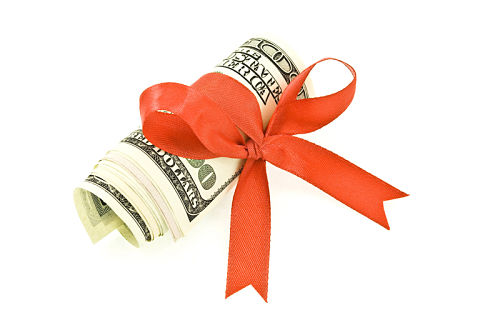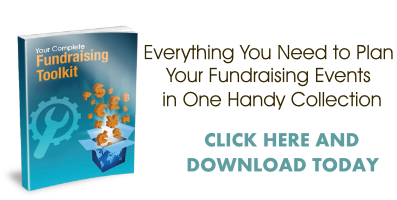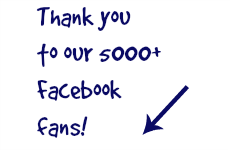4 Best Practices for Raising More Money from Matching Gifts
The following article is by Adam Weinger, president of Double the Donation, a company helping nonprofit organizations and schools increase fundraising from corporate matching gift and employee volunteer grant programs.
As Three Dog Night would say, “One is the loneliest number.” Promote matching gifts to make sure your donations don’t stand alone.
Matching gifts are like donation companions. Supporters give your nonprofit a certain amount, submit a form to their employers, and then the employer gives your nonprofit a donation of similar or greater value.
Think of your nonprofit as a matchmaker. Bring together compatible funds from employee and employer in matching gift program harmony.
Getting those two crazy kids together will take planning and skill, but with these 4 best practices your nonprofit will be in a better position than ever to double its funds!
#1 Learn All You Can about Matching Gifts, then Learn Some More
No one will take your matchmaking skills seriously if you can’t back them up with facts.
Just
like the best fundraising ideas combine creativity and market
knowledge, in order to successfully campaign for matching gifts
you need to know the method you’re pushing for and how the process
works.
Some
things you’ll learn as you go, but there is a ton of great
information available out there on nonprofit blogs and the like,
waiting to be read. Matching gifts deserve proper research. Don’t
worry that it’ll be too complicated to understand — the whole
process is actually fairly straightforward.
Having
a strong background on the subject will eliminate much of the
start-up hassle. Get a general sense of the average program, as
well as a more specific understanding of some of the major players in
the matching gift world, like GE and Microsoft.
The
main goal here is preparation. Know the fundraising method,
fundraise better. Wax on, wax off.

#2 Spread the Word
Communication is key. Donors need to know that you’re actively seeking matching gifts. There’s also a good chance they need to know what matching gifts are in the first place as matching gifts are just one form of corporate philanthropy programs that companies sometimes struggle to share with their employees.
When
telling donors about matching gifts, you need to be both promoting
and educating.
Take
advantage of your pre-existing communication platforms when raising
awareness, for instance:
- Describe matching gifts in an email newsletter
- Create a dedicated matching gift webpage
- Put a link to that dedicated page on the “ways to give” section of your site
- Have staff include a matching gift graphic in their email signatures
All
of those suggestions are part of your online fundraising presence,
but promotion shouldn’t be solely on the web. You could send out
informational packets using direct mail or have development staff
call major donors to let them know about matching gifts.
Just like with marketing any campaign, you’re looking for a balanced, even approach across multiple communication outlets.
#3 Keep Up to Date and Accurate Donor Data
The most important donor detail for matching gifts is employer name. Ideally you’ll know the employer’s name as well as the employer of the spouse, as many programs will match for spouses as well.
It is crucial that your donor data is current and correct.
Having a clean donor database will streamline the hunt for valuable matching gift donors. You want your donor database running at its maximum potential, so that your staff can focus on contacting the right supporters.
Knowing
that a supporter’s former
employer had a matching gift program isn’t
helpful; knowing that a supporter’s current
employer has a matching gift program is
helpful.
To
check and update your database in terms of matching gifts, you
could perform a prospect screening. A screening will eliminate a
large chunk of the work that your staff would otherwise be saddled
with.
The more personalized promotional methods such as calling should be focused, with carefully curated lists of donors. Reaching out to major donors who work for companies with great gift matching policies could result in a huge financial boost. You want to take extra care when contacting those matching gifts prospects and treat them like the high-rollers that they are.
#4 Check Your Progress
Once you’ve put a lot of time and work into incorporating matching gifts into your fundraising strategies, you’ll need to see how you’re doing. The best way to improve is to reflect on what you’ve done, identify areas of weakness, and focus on those areas.
So that you can properly check your progress you should be tracking your matching gift program performance in the following areas:
- Money raised from matching gifts in the prior year
- A set goal for money raised for the current year
- Percentage of total revenue that comes from matching gifts
- Top employers that have matched gifts for your organization
- Cost and time it takes to acquire matching gifts
This data will allow you to see the current state of your program and where it can go.
Given
that an estimated $6-10 billion in matching gift funds are unclaimed
yearly,
making a matching gift push is a great plan for your
organization. The better organized and run your campaign is, the
bigger the dent you’ll make in those unclaimed billions.
Helpful Links for Fundraising Ideas
Flyer Templates for Fundraising Events



